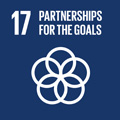- Docente: Elisa Baldini
- Credits: 6
- SSD: L-ART/03
- Language: Italian
- Teaching Mode: Traditional lectures
- Campus: Bologna
-
Corso:
Second cycle degree programme (LM) in
Italian Studies, European Literary Cultures, Linguistics (cod. 9220)
Also valid for Second cycle degree programme (LM) in Visual Arts (cod. 9071)
Second cycle degree programme (LM) in Visual Arts (cod. 9071)
-
from Mar 31, 2025 to May 14, 2025
Learning outcomes
By the end of the course, students will develop the theoretical-methodological and historical-critical tools to understand contemporary art forms from the early 20th Century to the multimedia formulations of the last decades. More specifically, with the critical awareness acquired, students will possess the necessary skills to deal with the study of the evolution of artistic movements and the resulting changes of languages, while keeping in consideration the changes of techniques and artistic practices; they will be able to carry out documentary and bibliographic researches in traditional and digital repertories, and to produce original texts for research or popularizing purposes.
Course contents
The exam for Contemporary art B consists of two courses:
Phenomenology of Contemporary Art (prof. Silvia Grandi) and Art in Europe between the Nineteenth and Twentieth Centuries (prof. Giuseppe Virelli.
Contemporary Art is an integrated exam of 12 CFU (6 CFU+6 CFU) and the evaluation of the preparation follows the procedures laid down for integrated exams, i.e. they must be taken in the same session and students must then register simultaneously for both exams.
The course takes place in the first semester for the Master's Degrees in Visual and Italian Arts, European Literary Cultures, Linguistic Sciences.
The course deals with the period ranging from the historical avant-garde of Dadaism in the second decade of the twentieth century to the latest art trends of the first decade of the current century, offering a historical-critical framework of the main artistic researches developed at international level. The succession of movements constitutes the starting point for a reflection on the modifications of styles, techniques and artistic practices up to the encroachment into the immateriality of contemporary trends.
Readings/Bibliography
The program is the same for all, attending and not-attending students
BARILLI, Renato, L’arte contemporanea. Da Cézanne alle ultime tendenze, Feltrinelli, Milano, edition 2005 or later, chapters 10-15, pp. 187-393.
POLI, Francesco, (a cura di), Arte contemporanea. Le ricerche internazionali dalla fine degli anni ’50 a oggi, Electa, Milano, edition 2003 or later, study ten essays of your choice for the exam.
BARILLI, Renato, Protagonisti, Postmedia books, Milano, 2022.
Teaching methods
Lectures accompanied by various audio-visual media, essential to understanding the methodology applied to the course. There will be several meetings (which students are expected to attend) with some of the authors of the books in bibliography and/or with experts from the various fields related to the course.
Assessment methods
The exam consists of an oral interview that will be the same for all students (attending and not attending) to evaluate the critical and methodological abilities acquired by the students, and it will be based on the recommended bibliography. Students are expected to demonstrate the acquisition and possession of the fundamentals of the discipline and the methodological approach adopted, including the recognition of images of art works. In this regard, they are invited particularly to focus on the iconographic documentation that accompanies the exam texts and the teacher's educational material on Platform for teaching support service.
Evaluation criteria for the interview:
1. It will be graded as excellent the performance of those students demonstrating to be able to thoroughly analyse the texts and to put them into an organic view of the topics discussed during the course. The proper use of the specific language during the examination will be also essential.
2. It will be graded as satisfactory the performance of those students with mostly mnemonic knowledge, no in-depth analysis capabilities and a correct, but not always appropriate, language of the recommended texts.
3. It will be graded as barely sufficient the performance of those students with approximate knowledge, superficial understanding, poor analytical capabilities and a not always appropriate language.
4. It will be graded as insufficient the performance of those students with learning gaps, inappropriate language, no orientation within the recommended bibliography.
Students with SLD or temporary or permanent disabilities.
It is necessary to contact the relevant University office ( https://site.unibo.it/studenti-con-disabilita-e-dsa/en ) with ample time in advance: the office will propose some adjustments, which must in any case be submitted 15 days in advance to the lecturer, who will assess the appropriateness of these in relation to the teaching objectives.
Teaching tools
Various audiovisual aids (audio files, image projections and digital movies). Through the platform “virtuale.unibo.it”, students will be provided with images and lecture-based presentations and other educational materials.
Links to further information
http://corsi.unibo.it/Magistrale/artivisive/Pagine/default.aspx
Office hours
See the website of Elisa Baldini
SDGs




This teaching activity contributes to the achievement of the Sustainable Development Goals of the UN 2030 Agenda.
